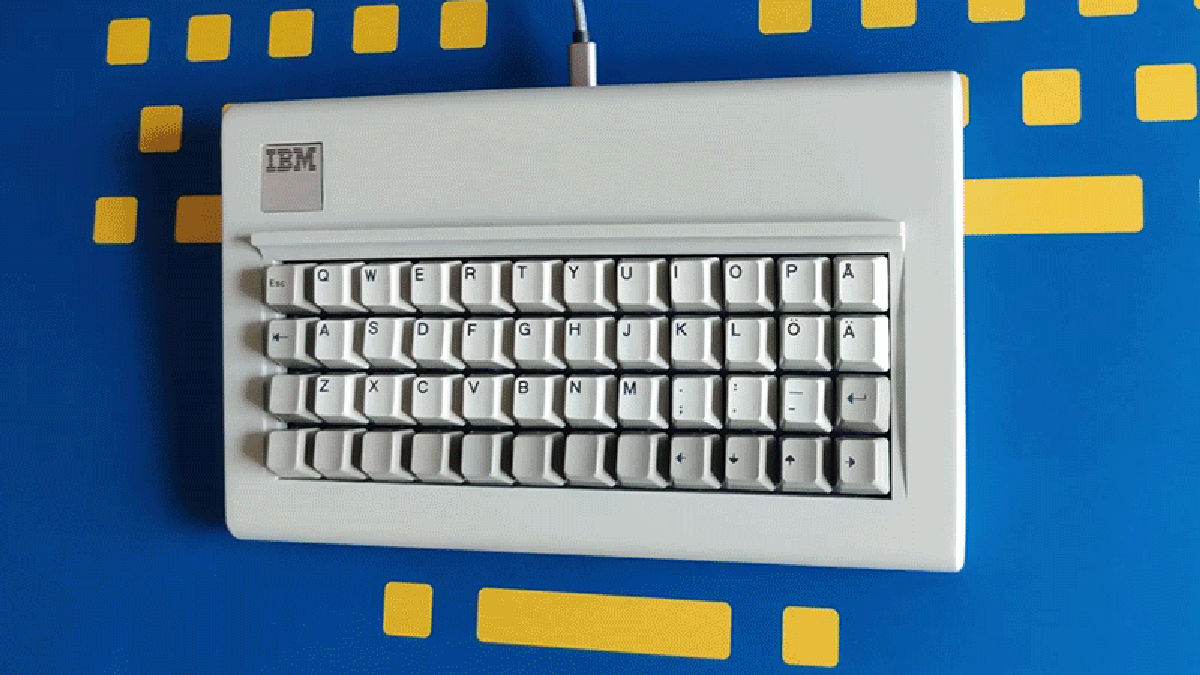This Custom-Built Miniature IBM Model F Keyboard Is an Absolute Work of Tech Art - 2 minutes read

Even having grown up using Commodore 64s, Apple IIs, and IBM PCs, I have no fondness for mechanical keyboards. I’m most happy with a set of short-travel, chiclet-style laptop keys under my fingers, but even I can feel myself being lured to the cult of mechanical keyboards by this impressive compact recreation of a classic IBM Model F keyboard.
Although modern mechanical keyboards draw inspiration from the myriad of keyboards and input devices used in the ‘70s and ‘80s (for electric typewriters and the earliest personal computers), there are two specific models that stand out as the driving force behind today’s obsession with keyboards loud enough to wake the dead: the IBM Model F, and its follow-up, the Model M. Both used a patented buckling spring mechanism inside, paired with other moving components—including a tiny hammer—to produce a distinct feel and sound when the keys were pressed. Some loved it, while others are glad that noise cancelling headphones are now affordable and effective.
A member of the Deskthority forums who goes by “Durken” recently shared a custom build that looks like a perfect recreation of an IBM Model F keyboard, but scaled to 40% of its original size, losing the numpad and even the wide space bar in the process. To make it look and feel as much like the original as possible, Durken used keys with authentic buckling spring switches, and even referenced a Model F’s PCB in order to design their own more compact alternative. Just like IBM’s, it has a slight curve when installed inside a 3D-printed enclosure, which Durken also heavily puttied, sanded, and painted to give it a perfect ‘80s beige finish.
As if the buckle spring switches weren’t already loud enough, Durken added an extra level of optional haptic feedback with the addition of a solenoid inside that fires every time a key is pressed, making the keyboard sound more like working on a mechanical typewriter. To keep the solenoid feature a secret, it’s covertly activated by pressing the IBM logo, which is normally nothing but a foil sticker, but here functions as an additional mechanical button.
Source: Gizmodo.com
Powered by NewsAPI.org